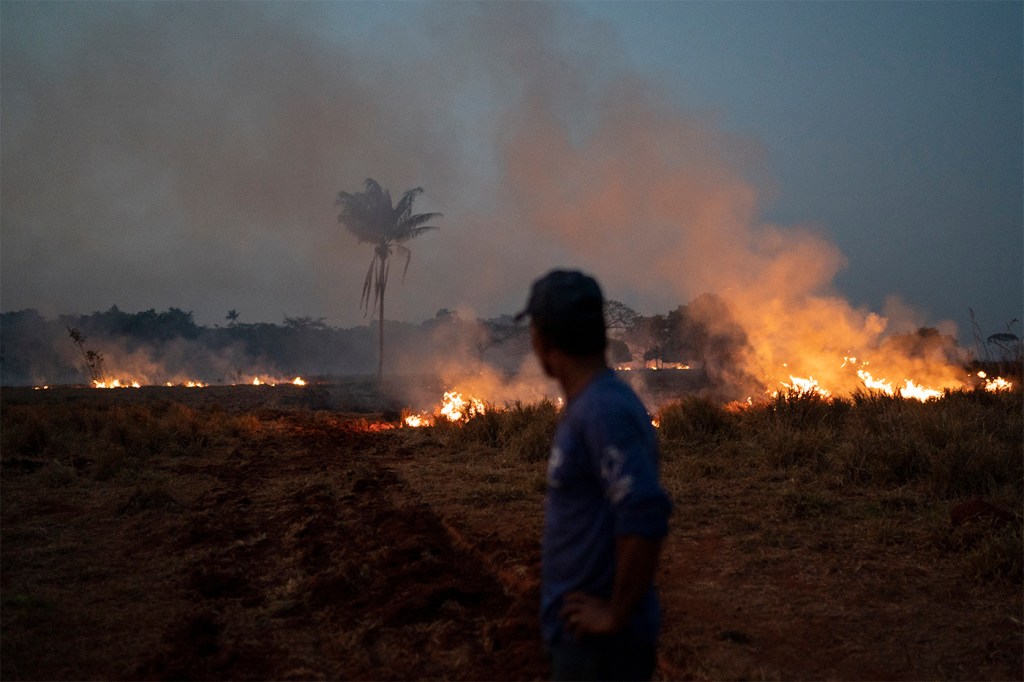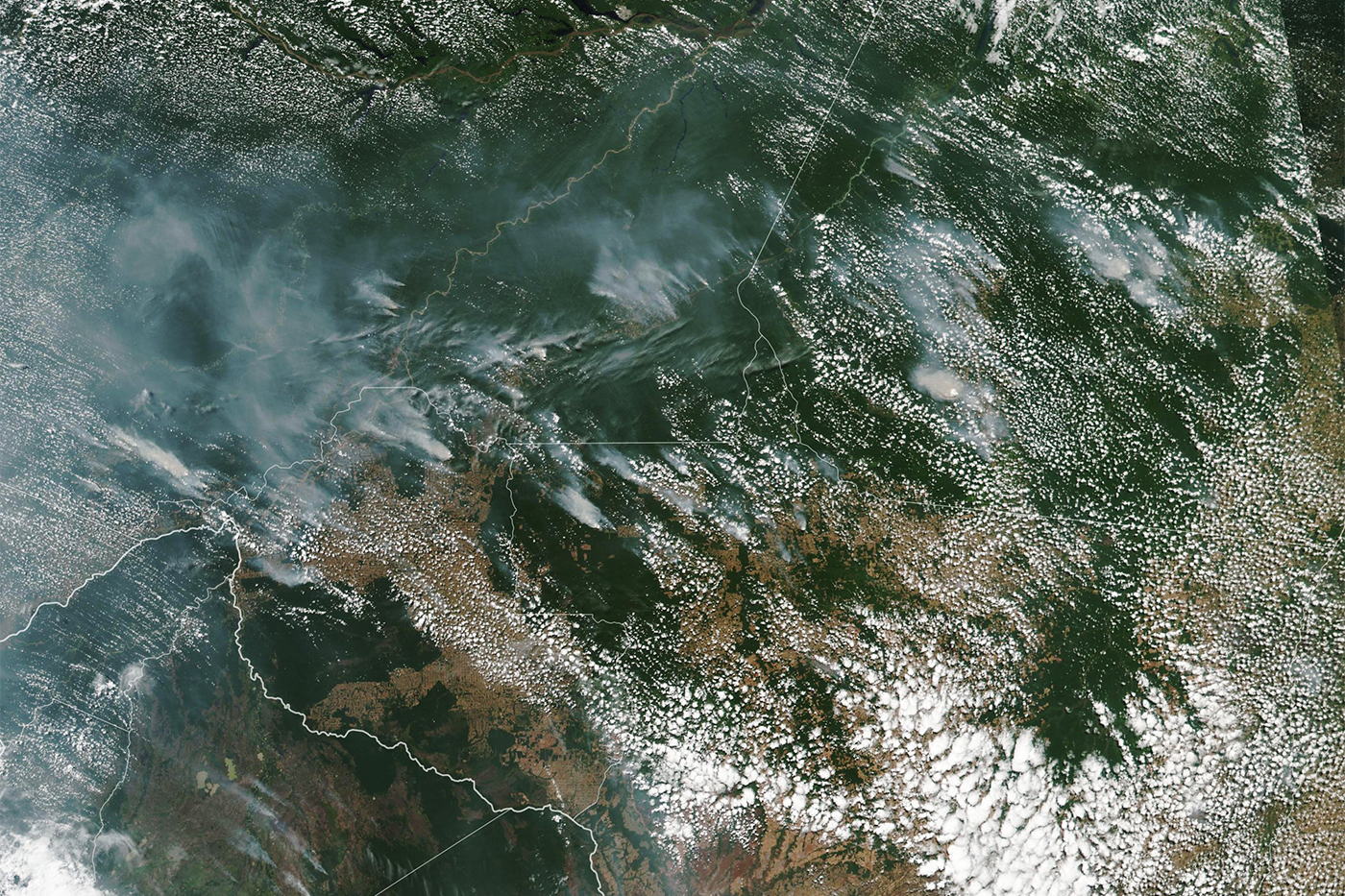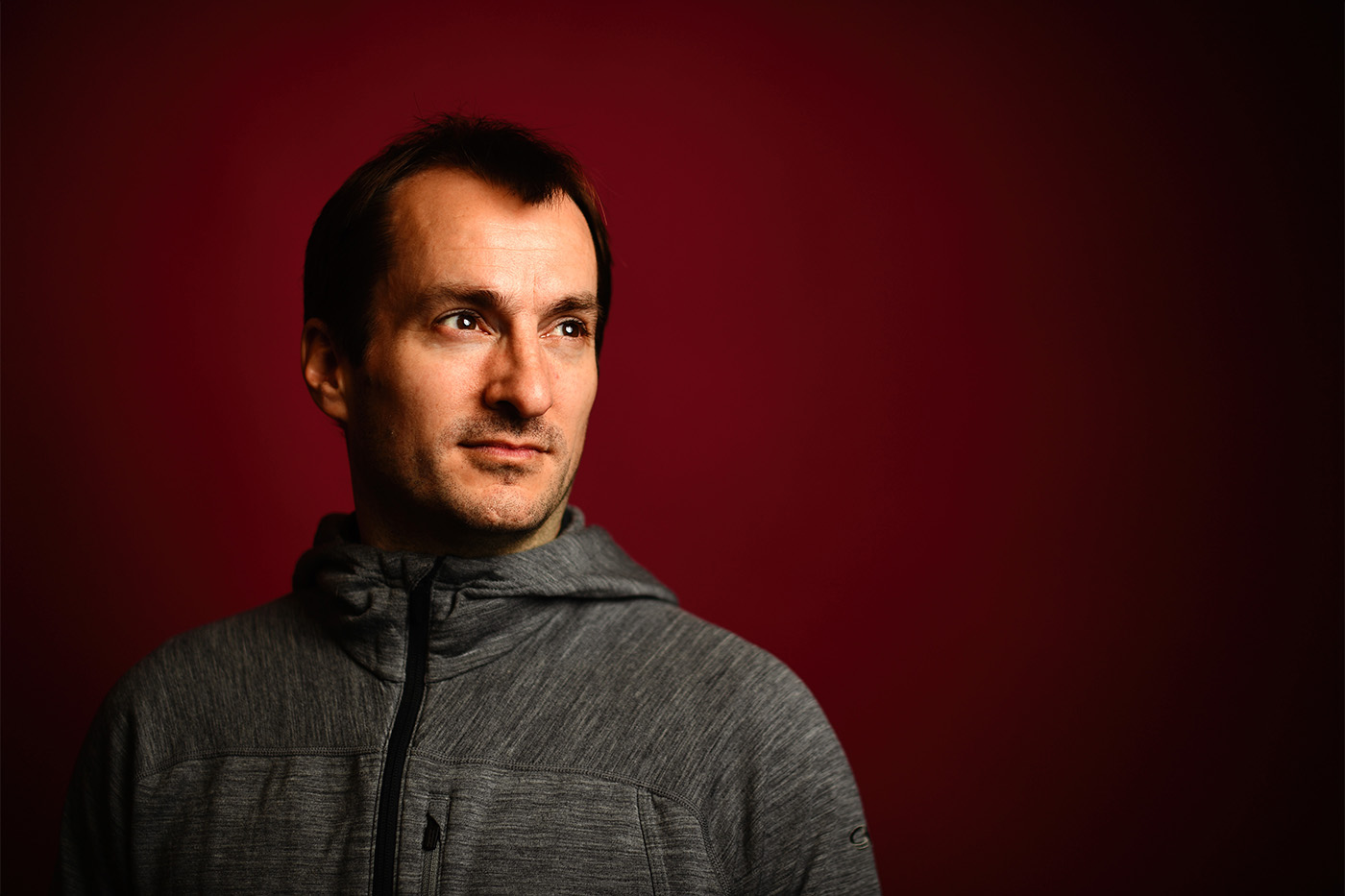The Amazon rainforest has been burning for weeks. Here’s why that matters.

It’s a giant air filter nearly as vast as the contiguous U.S. And it’s been burning for weeks.
Covering extensive territory in Brazil, Peru, Colombia, and smaller parts of six other countries, the Amazon rainforest houses the most diverse groups of plants and animals in the world. This forest also plays an instrumental role in driving the weather and climate in South America.

A satellite image of several fires burning in the Brazilian Amazon forest captured on Aug. 13, 2019. Courtesy of NASA
But several regions of the Amazon have been ablaze for weeks, generating enough smoke to turn skies dark midday in São Paulo, Brazil’s financial hub. A new record of nearly 74,000 fires have been spotted in 2019, 80 percent more than this time last year.
“Seeing that smoke in São Paulo is like having a fire in California and then seeing the smoke here in Boston,” says Aron Stubbins, a Northeastern professor of marine and environmental sciences. “It takes hours to fly across the Amazon, so it’s a long way for smoke to travel.”
The Amazon is always prone to wildfires during the dry season in South America, although scientists at Brazil’s National Institute for Space Research said the 2019 fires could not be attributed to drought. International leaders and non-governmental environmental organizations instead attribute the surge in fires to illegal deforestation by loggers and farmers, who use the cleared-out land for cattle ranching.
“The Amazon burns every year at this time of year, but the pristine forest burns less frequently and less intensely than the cleared and recovering forest,” Stubbins says. “If you have more recovering forest, it’s more likely to burn each year.”
The historic fires in Brazil come as Siberia and Alaska, two other major forested areas, also saw a record number of fires last month. G-7 countries pledged $20 million on Monday to help fight fires in the Amazon rainforest, which threaten its ability to capture carbon released into the atmosphere by cars and other emitters. But Brazil rejected the offer of aid on Tuesday, according to reports by CNN, the BBC, and other news outlets.
“Thanks, but maybe those resources are more relevant to reforest Europe,” Onyx Lorenzoni, the chief of staff of President Jair Bolsonaro of Brazil, told Brazilian news site Globo.

Wildfires in the Amazon could worsen because of deforestation and threaten the rainforest’s ecosystem, says Aron Stubbins, a professor of marine and environmental sciences at Northeastern. Photo by Adam Glanzman/Northeastern University
Rainforests are dense, evergreen jungles known for producing constantly high amounts of rainfall throughout the year through a process by which plants pull water from the soil and then release vapor into the atmosphere. It’s how Amazonia, the largest tropical rainforest on Earth, essentially makes it rain in South America. In the Amazon, it rains and rains—and rains—even when it’s not in the rainy season.
“You have really rapid and massive volumes of water on global scales cycling every day, raining and evaporating,” Stubbins says.
The jungle’s heavy influence on water dynamics drives the weather in countries such as Uruguay, Argentina, and Paraguay, whose rains feed off the water produced by the Amazon’s foliage. Some computer models also point to the rainforest’s potential influence on natural resources such as snowpacks in the Northern Hemisphere.
“If you change part of that water cycle, then there’s a displacement in the amount of moisture in the atmosphere and how much of that moisture makes it, say, north to California,” Stubbins says.
Over time, trees also play an important role in cycling carbon out of the atmosphere and using it to make biomass and grow through a process called photosynthesis. It is how plants, trees and phytoplankton convert light into energy, and how the oxygen we all breathe on Earth is produced as a byproduct.
This is the mechanism that allows the Amazon Jungle to suck up to a quarter of the planet’s atmospheric carbon dioxide. It’s part of an annual breathing cycle in the planet, Stubbins says.
“Trees do that at a global scale,” he says. “Up here in Boston, if you went to measure carbon dioxide over a forest, you would see in the summer time that carbon dioxide goes down and in the winter it goes up as part of this cycle.”
The recent increase in fires adds to the concern from the international scientific community that the Amazon could turn from a wet and fire-resistant jungle into a savannah-like tinder box that would contribute to the rising levels of atmospheric carbon dioxide.
“You can imagine the loss of carbon you get by clearing a rainforest and replacing it with savannah or grassland and then comparing the amount of carbon that the two can store,” Stubbins says.
For media inquiries, please contact media@northeastern.edu.





